Piezoelectric shoes generator
In Madagascar, only 22% of the population has access to electricity. When the sun goes, every daily activity stops unless you use a candle or petroleum light. But the problem is even those sources of light are not bright enough to light an entire house. Therefore, the things that you can do are limited so most people find sleeping early as an option. People in remote countryside of Madagascar often sleep as early as 06:00 pm. For young students, it is difficult because there is no way to finish homework. No electricity means no light for studying and no power for running radio or television. The access to information is limited and the opportunity to learn is limited. During some moments of my childhood, I experienced that. It was painful that is why working on a project that can tackle such problem interested me.

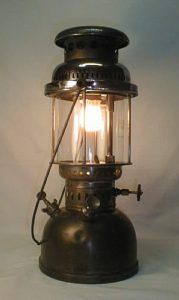
There are many ways to produce electricity. We mainly use coal to do that but as we know coal and oil have bad effects on the environment due to their CO2 emission. So, people tend to choose another alternative like a solar panel, wind turbine or biomass. Still, those alternatives remain expensive and too much independent of their respective energy source. My project sounds stupid but I think it has a lot of potentials. My idea was to build a shoe that generates electricity through walking. Imagine as long as you walk, you can produce electricity! It sounds cool, isn’t it? Its application may be very significant especially in Sub-Saharan Africa where the majority of people walk a lot. Imagine students walk home after class. The power that they collected from walking can be used to generate light for them when doing homework. We can make a battery inside to store the energy. That was my idea.

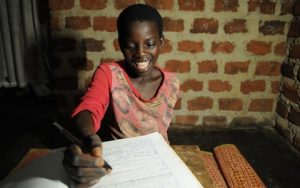
My power generator is made from a material called piezoelectric transducer. It has the ability to convert pressure into electricity. The main problem of this technology is that it produces a very small amount of current. My challenge was to design a lot of prototype of design in which I can have higher production. Therefore, my two mains approaches were to design all the possible wiring configurations of the power generators and to locate the power generators in where our foot make the most pressure. During my experimentation, I did a lot of models and prototype. I could light some Light Emitting Diode with them.
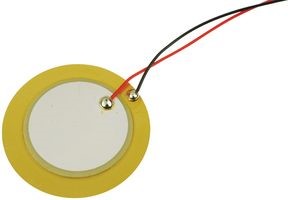
One of the initial prototypes that I made was to make the piezoelectric transducers on one side of the sole. Although it worked perfectly, a double side configuration can be even more efficient.
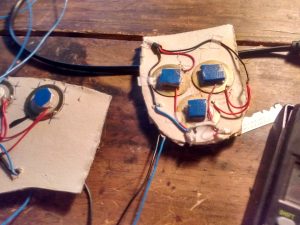


With the double side configuration that I made, I made a hole in between them. The holes are made to allow the piezoelectric transducers to curve. Such modification can boost the generation of these last.
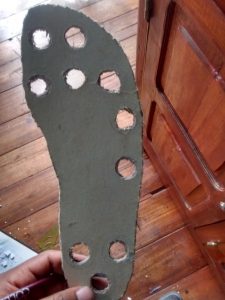
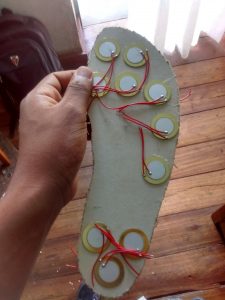
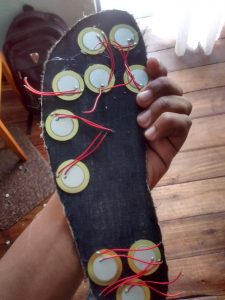
When I worked on the previous prototype, I noticed that my shoe soles need to be flexible because our foot is flexible when we walk. The initial material that I used was a very solid paper material extracted from an unused box. It was not flexible enough which was not very comfortable when you try to step on it. In Madagascar, when we fetch water we use these kinds of water can.

These last are found everywhere. When they are broken, people throw them. However, those cans are made from a very flexible plastics so I based on that to make my next design. This new design also included 3 layers of soles and build arranged in a sandwich-like configuration.
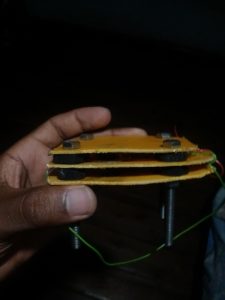

Although this project sounds cool, there is also a risk. And the biggest risk of such a project is the electrocution if it is not well protected. In my case, the amount of energy produced by my piezoelectric generators was still small, but it can still be dangerous. I could not work until the protection part of it. However, I find that a way to reduce such risk would be to not include the battery in the shoe. The power generated can be wirelessly transferred directly to a portable power bank or directly to the device. This idea came to me when I worked on the Tesla coil project. Unfortunately, I took a break with this project because I had to go for my internship in France and then continuing my study in the US. Still, I would be happy to work on such a project again. This project taught me a lot about the importance of the engineering design process and creativity. I learned the electronic parts of it as long as I worked on the project. One of the systems the battery alternative that I found was, for example, the use of supercapacitor. This last has the advantage of being able to be charged fastly.
I will think to write a more technical process of this project next time. So, that I can give you more about it. My problem was that I did not know the importance of taking photos of every phase of the project. It makes the writing process hard.
Leave a Reply